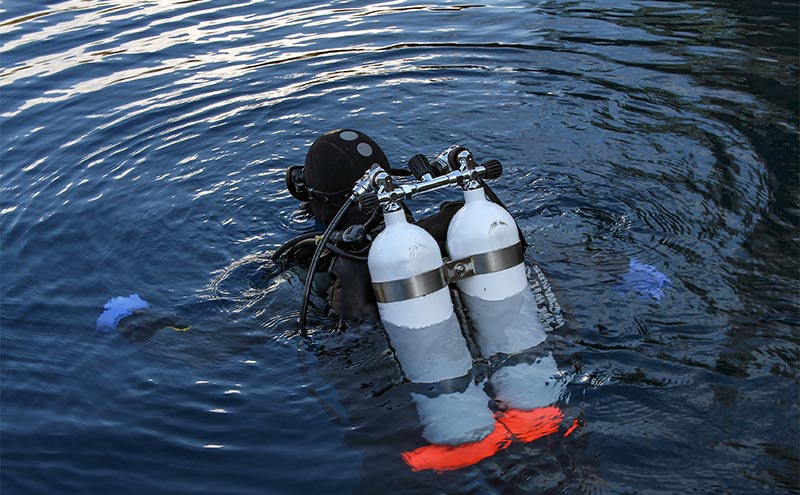
Aerospace DCS: A Primer for Hyperbaric Medicine Physicians
There is one clear link between aerospace medicine and hyperbaric medicine, and this relates to aerospace decompression sickness (DCS). In hyperbaric medicine, we tend to think of the bends in a purely diving sense, but if you compare diving with flying, you can equate unpressurized high altitude exposure as a diver coming to the surface after saturation diving; if there is no opportunity for off-gassing, the potential for DCS exists.
As a former USAF flight surgeon, we were taught that pilots could develop DCS, however we never truly considered it to be a common risk. Spatial disorientation, dehydration, and supplement use captured most of my attention. However, in my first year of practice. I treated a central nervous system (CNS) DCS event in a U2 pilot flying at over 70,000 feet. I knew little of hyperbaric medicine then and did not completely understand why a USN Treatment Table 6 was being used, but it was indicated and therefore performed.
As a newly-trained hyperbaric medicine specialist with several years of experience in operational aerospace medicine, I find that there is similar unease amongst hyperbaricists in approaching aerospace DCS. There are multiple potential scenarios of DCS occurring in those exposed to hypobaric environments; these include pilots in isobaric differential cockpits at higher altitudes, aircrew performing air drops, or special operators performing high altitude parachute jumps. However, there are many other causes of aerospace physiological events that do not involve DCS. Too easily, human nature tends to group all problems together, seeing nails needing a hammer rather than a screw needing a screwdriver…
When we think of DCS in diving, we seek to understand the provocative nature of the dive. The Haldanean proposal of the 2:1 ratio of pressure differential is helpful in this regard. If we are at 1 ATA at sea level, depending on weather conditions, a flyer or jumper would need to be depressurized to a level greater than 18,000 ft to have a provocative flight. Most scenarios simply do not meet this criterion, which does not rule-out DCS, but makes it less likely.
The rash of events most recently experienced by the Navy call into question this generally accepted rule that aviator DCS is a rare event.1 In some cases, the wishes of senior military leaders have the potential to exert influence on the clinical judgment of hyperbaric specialists. This has further bled into the civilian sector, as a physiological event in a military aircraft is now too easily translated into an aerospace DCS event. “The Navy is diving these pilots,” is what I sometimes hear as supportive reasoning. From the perspective of a USAF flight surgeon, who has flown in high performance military aircraft, I dare suggest that aerospace DCS events are not as common as some suggest. A rapid decompression event in a cockpit can be akin to a blast injury and involve different pathology than DCS; similarly, opening shock of parachutes can be traumatic and cause significant force and damage. Improved symptoms after recompression treatment should not be used as proof of diagnosis. DCS is a possibility if there is any exposure to unpressurized environments greater than 18,000 feet but be wary of ascribing vague neurological complaints to DCS (especially at lower altitudes).
As with dive injuries, it is imperative to get the details of exposure. Ascertain the altitude of the flight and determine whether it was a provocative profile. Ask about the type of aircraft, length of exposure, and perform a detailed physical exam, to include a thorough neurological evaluation. Determine if there was oxygen prebreathing, as most high-altitude jumpers are required to do so (thereby decreasing the risk of DCS). Most importantly, determine if there were other causes that could explain symptoms. Was there potentially barotrauma or blast effect of a decompression/overpressurization event in a cockpit? Was there trauma sustained from jumping out of the aircraft or landing with poor technique?
Keep DCS in the differential when evaluating a pilot, but do not automatically jump to the diagnosis. The true cause may be unrelated and multifactorial.2 Although fairly safe, there remains some risk with recompression treatment. Further, the effort and cost in providing treatment can be substantial. Finally, it is important to keep in mind that if the patient is a military asset, both Air Force and Navy personnel have a hyperbaricist on-call to further discuss the situation, as well as help to navigate the military-specific aspects of the case.
References
- Eckstein M. “Naval Aviators Underway Keep a Wary Eye for Physiological Episodes.” USNI News, March 28, 2018.Learn More
- Eckstein M. “Navy Clear on Causes of Physiological Events in Pilots; Final Recommendations Released for PE Mitigation.” USNI News, June 18, 2020. Learn More
Hideaki L. Tanaka, MD



